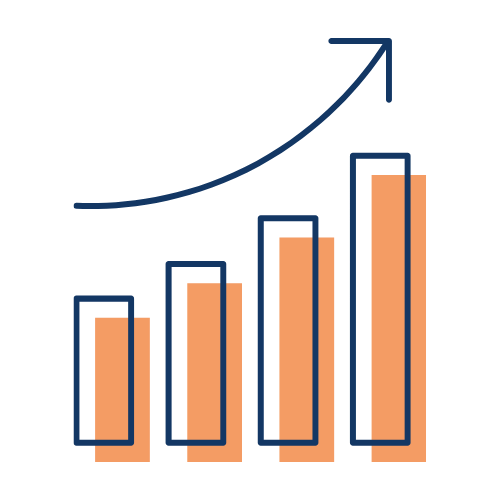Best Dashboard Tips for 2022
“The goal is to turn data into information, and information into insight.”
Carly Fiorina
Creating a dashboard is hard. We get it. Firstly, you have to decide what is important enough to actually show up to the party. Secondly, you have to consider everyone’s opinions (yay). And lastly, it still needs to look good, otherwise nobody wants to view it.
So we’ve put together a list of dashboard tips and best practices that will help you in trying to create the perfect dashboard. Although, let’s be honest- does one actually exist already?!
You don’t need 300 graphs
We know, this may be a bit hard. But when you only have the attention of an executive for 5 minutes, everything counts.
Keeping your dashboard simple makes it easier to read. Generally, around 4 to 6 elements on your dashboard should be more than enough to get the point across and deliver actionable insight.
2. Make your metrics comparable
When adding headline cards, it’s often good to have them compared. Comparing metrics to a previous time period is great because then you can calculate growth.
You can also compare metrics to a budget or target you set and then calculate the percentage you missed it by.
3. Split your dashboard into related sections
Your dashboard needs to be read logically. Avoid mixing up different metrics as this may confuse the reader.
There are various methods to section your dashboard
by Metric (Profit, Sales, Expenses)
by Product
by Location/Store
4. Choose a color palette, and stick to it.
It’s always good to choose 3 or 4 main colors which will appear on your dashboard. Mixing up different colors will make your dashboard look too busy. It might also steal the attentions from the metrics, which should be the star of the show.
To assist you, you can use a color palette generator such as coolors.co
5. Round up your numbers.
A dashboard shouldn’t display figures to the penny. You should round up your numbers to the nearest applicable unit.
Big, long numbers not only distract the user. It can also steal your dashboard real estate, and you should always make sure any space in your dashboard is being used as aptly as possible.
6. Real time data may not be needed
Some spend too much time on trying to figure out how to use real-time, instant data on their dashboards.
The truth is, in most cases it may not be necessary. Real-time data is only useful if the user needs real-time action. This may include fraud related data or system errors.
However, someone like a sales manager may not need real-time sales and will probably only check on the number of sales every hour.
Make sure you know what the exact purpose is of using real time data before working on brining it into your dashboard.
7. Create a dashboard mockup
Create a mockup of your dashboard before actually building it. This will help you decide what may be important to keep and also what may not be needed.
It’s also easier to style and format a dashboard when you have a mockup of it as you know which elements should go where.
8. Use clear labels everyone can understand
Yes, you’ve heard it in school- label your graphs and tables! Labels should describe each metric and graph. Labels help the dashboard to be more user friendly and should be done concisely so it doesn’t clutter the dashboard.
Always make sure your dashboards can be understood by stranger.
9. Use interactive elements
Your dashboard should be interactive where the user decides where they need to go. A good dashboard will have options where the user can filter the data or drill down to a more detailed view.
Having date filters may help as the reader can select a certain time period and base their decisions while doing their own investigations.
10. Keep editing your dashboards
If your dashboard is in production and used consistently, make sure you have sessions with all users for their feedback.
Often, one small change can really help the user interpret it better and as a good analyst, you should always build with the user in mind.
It’s important to always make sure your dashboards are getting used consistently, so send out surveys to gather user feedback.





